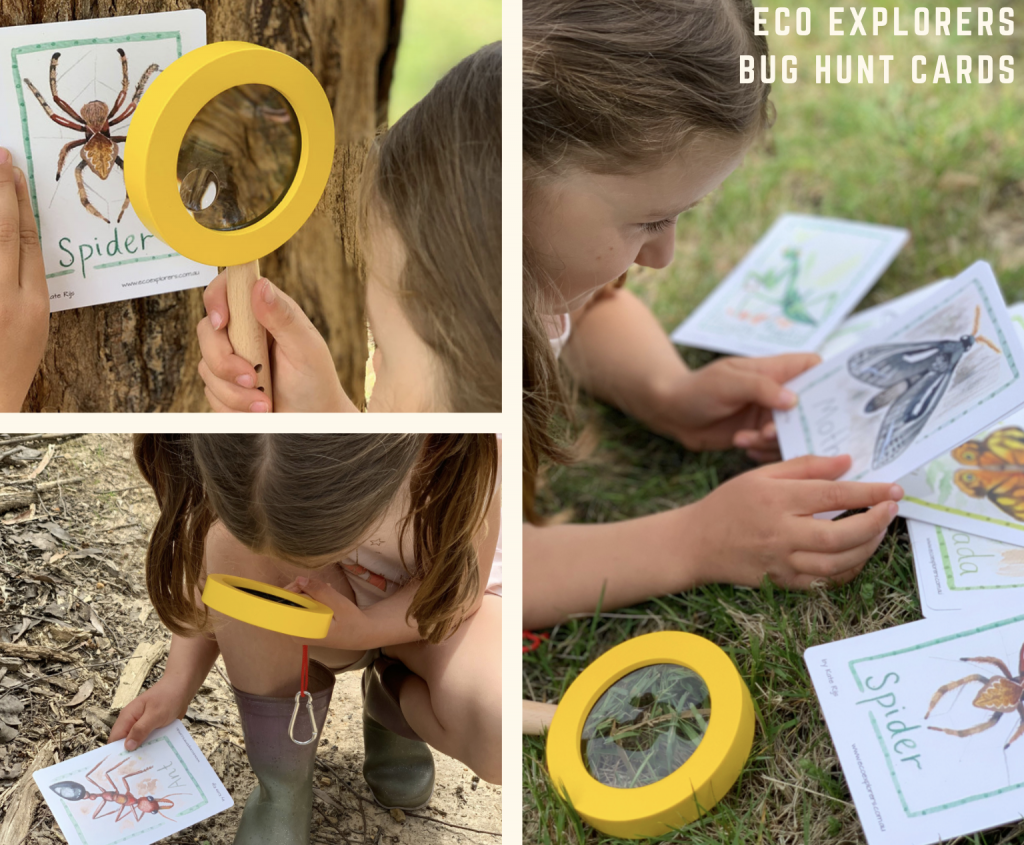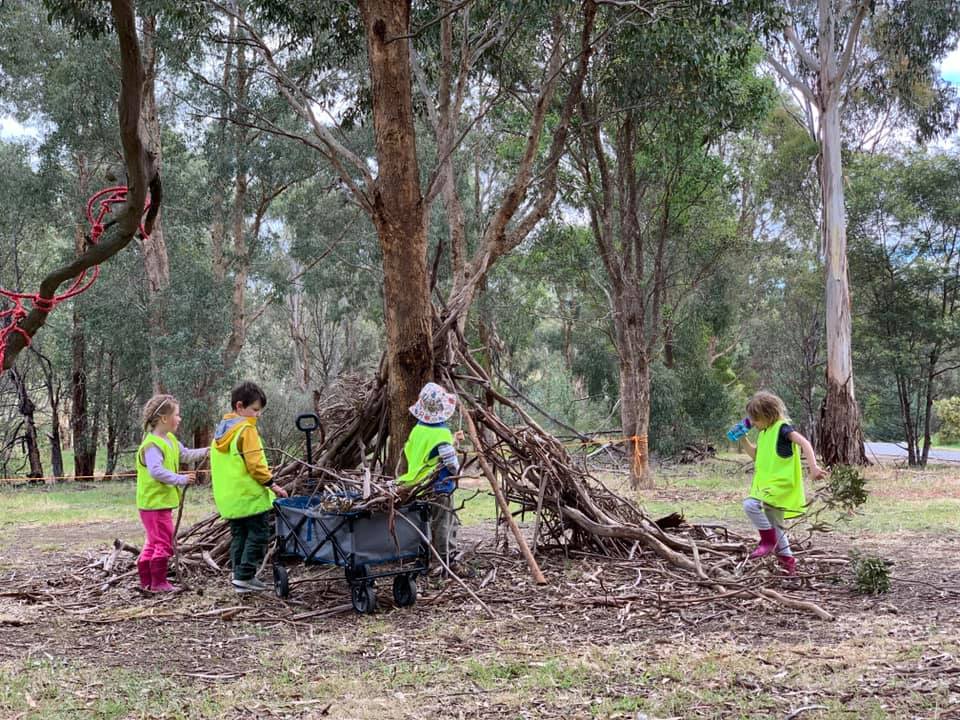Nature can be daring and it can be silent. It can be wild or gentle, gloomy or glorious. There is no one way, to be in nature. Patterns come and go, just like ‘we’ change from one moment to another. Our children sense this intuitively and crave the freedom for total immersion in their play and learning, especially now in these changing times. We should follow their lead.
Why should we all be considering taking learning outdoors? Because the rise in forest schools around the world and the benefits for our children’s education, physical and mental health, tells us that the last thing that children need to be doing after being home for so long is to be made to sit in a classroom all day. To fully understand the benefits of bush school and outdoor learning, we first need to consider what it is that our children really need to lead a successful and happy life, and how can they be best learn it as the individual that they are?
When most people think of education the first thing that may spring to mind is literacy and numeracy. They are absolutely correct, however, those core skills need not be stand-alone subjects to focus on. As Kathy Walker outlines in her Early Life Foundations workshops, ‘education’ should focus on skills for life too. Well, that makes sense! How can we get children to think for themselves, create, imagine, navigate challenges, develop intrinsic motivation, communication skills and build resilience? The simple answer is learning outside collaboratively in nature. This is what bush school is about!
I get excited setting up open-ended learning opportunities in bush playgroup and forest school which are all play-based. Knowing that ‘brain research’ states that young children need to be active to learn, our outdoor opportunities abound. As any parent or educator, I first consider my cohort. What are the children’s interests or passions and what child-led inquiries may we follow? What are their strengths and what is my intention to extend their learning, but most importantly, what opportunities does my bush school location hold on that given day?
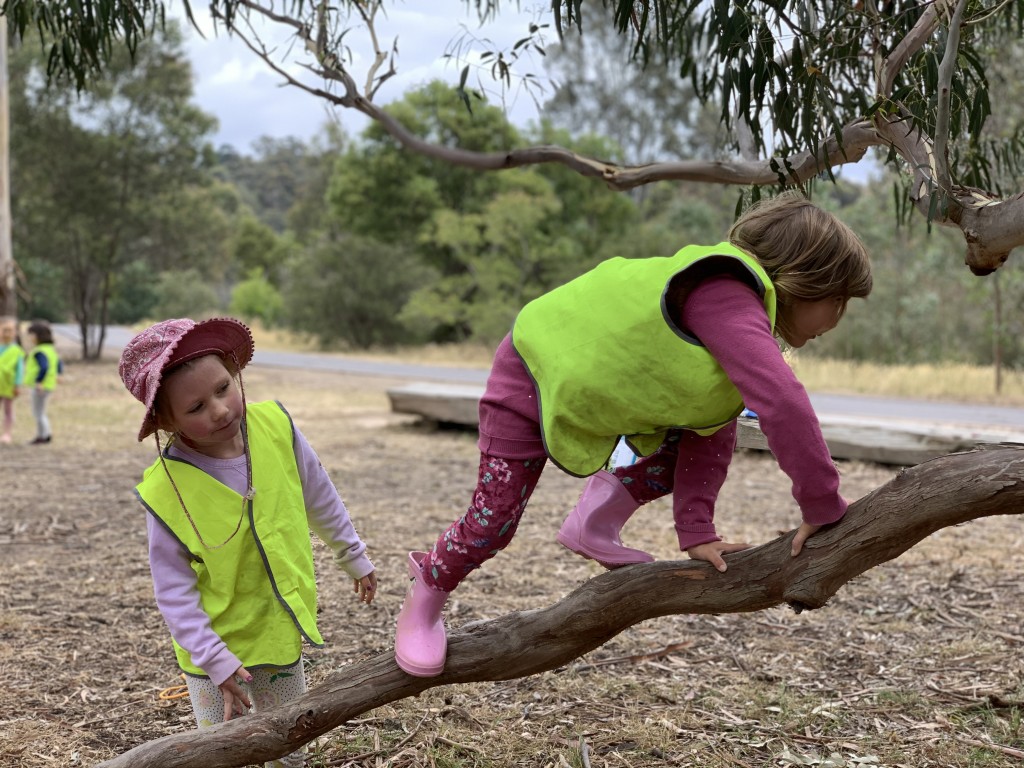
One of my favourite memories at bush school was on a late Autumnal morning. When we arrived up to our misty mountain at Arthurs Seat, mushrooms were popping up everywhere! My Mornington Peninsula bush kinder group started naturally counting them, classifying them by simple colour or cap shape. (numeracy) The mushrooms led us all on a totally engrossing mushroom hunt considering where they grew best and why? (science) Were they connected and why did they appear so quickly pushing at the soil? We considered the season, weather and the rain. (geography) Imaginative storytelling also popped up spontaneously as theories about fairies and elves took centre stage. (literacy)
One of my little explorers had been very quiet throughout our learning journey all term, but this was his week to shine. (belonging) He had some knowledge – a passion in fact for stinkhorn mushrooms. A smelly, sticky spore on a fly attracting phallus shaped mushroom. What on earth??? So this was his opportunity to share and my opportunity to extend his ability to communicate and eventually collaborate with his peers. He guided all the other children on how to build a ‘stinkhorn trap’. (create) Now, this of course was a fictitious project but it was embedded so much opportunity.
Mini bush huts sprung up everywhere with sticks balancing like tee pees tied with little wool knots. (fine motor skill) Bait laid in those traps of smelly identified scat that were part of the design to attract flies hopefully carrying stinkhorn spores. (nature/biology) The play extended as some made theirs pretty colours from nature and other’s fierce and spikey (art)…others had wondered off to climb a tree (challenge) and swing on the rope swing (pre-literacy strengthening core and pencil grip) but ultimately the session culminated in me taking the opportunity to allow this fascinating young fellow to lead our closing discussion. (inclusion, confidence) This was magical. How could you even plan that breadth of learning between 4 walls!
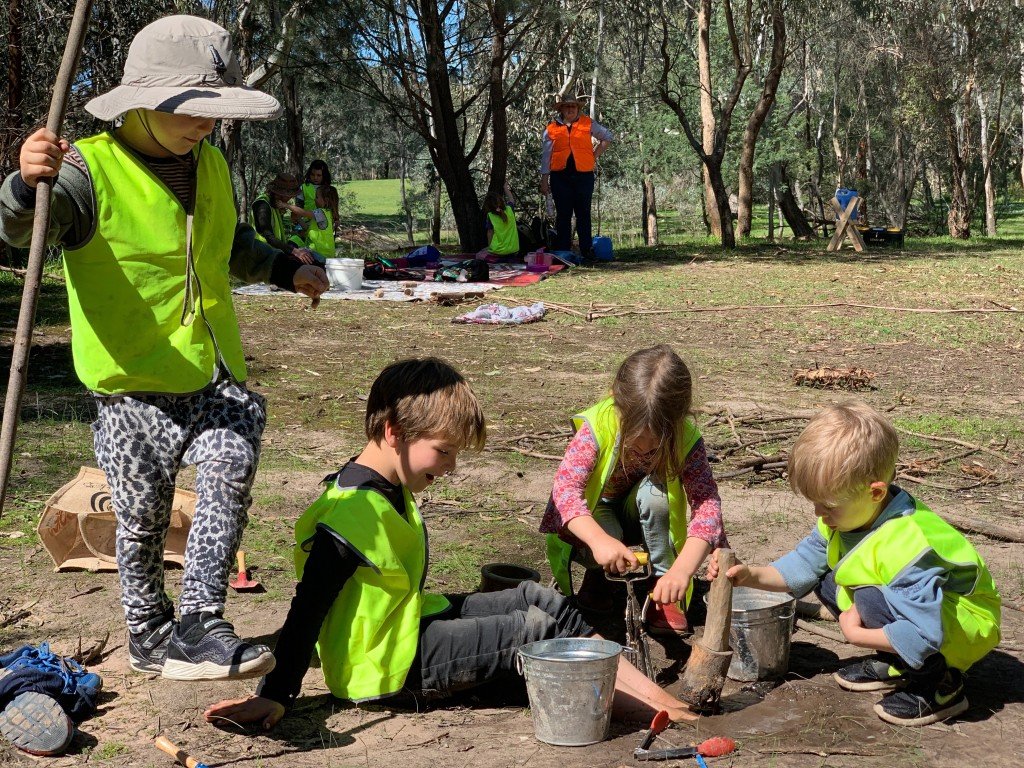
The overt learning illustrated in our mushroom adventure is not the only miracle that happened that day. Not once did I have to motivate any children to participate. With open spaces and endless resources in nature, there were very few behaviours that needed attending to. The conflicts that did arise were resolved with independence, given the space and shared objectives. I did facilitate some specific opportunities for children to work together, share ideas or model skills for each other. Listening respectfully during story telling too but each child was able to engage and learn in their own way.
As I think back to that amazing morning that evolved so organically, I reflect on why there was so much satisfaction. I think I know why. If I cast my mind way, way back to my teaching studies I know I unintentionally satisfied Gardiner’s theory of Multiple Intelligences and how we need to learn through our aptitudes (nature, music, maths, knowledge, people, body, visual or language) and I even kept philosopher John Dewey happy knowing he considered the best education involves learning through doing and even in an immersive experience in one’s local environment. Tick!
Could there possibly be more benefits? Shall I mention zero waste in nature play or perhaps that “kids interacting with the land that is breathing, breath deeper themselves – plus look closer and observe more!” (Montessorinature.com) What about developing a love and connection with nature itself that leads caring for the environment through natural born empathy? I could go on.
The most hidden but important positive about bush schools and learning in nature for me, which is often overlooked when learning inside, is the human necessity to satisfy the senses. Yes, I do mean stretching your eyes to the horizon, becoming mindful listening to natures chorus, smelling the damp earth, tasting bush tucker, touching soft damp moss but there is more to it. Today more than ever we are noticing that some children can’t sit still or concentrate for long. Many have very little intrinsic motivation and others just need something else to regain focus. In our age of technology and our risk aversion, many children’s sensory systems are not developing to their potential. The need to balance, rotate, focus and improve reflexes which falls under the vestibular sense. Spinning on a rope swing, rolling down a grassy hill and balancing on a log provide vital developmental feedback for growing and learning bodies.
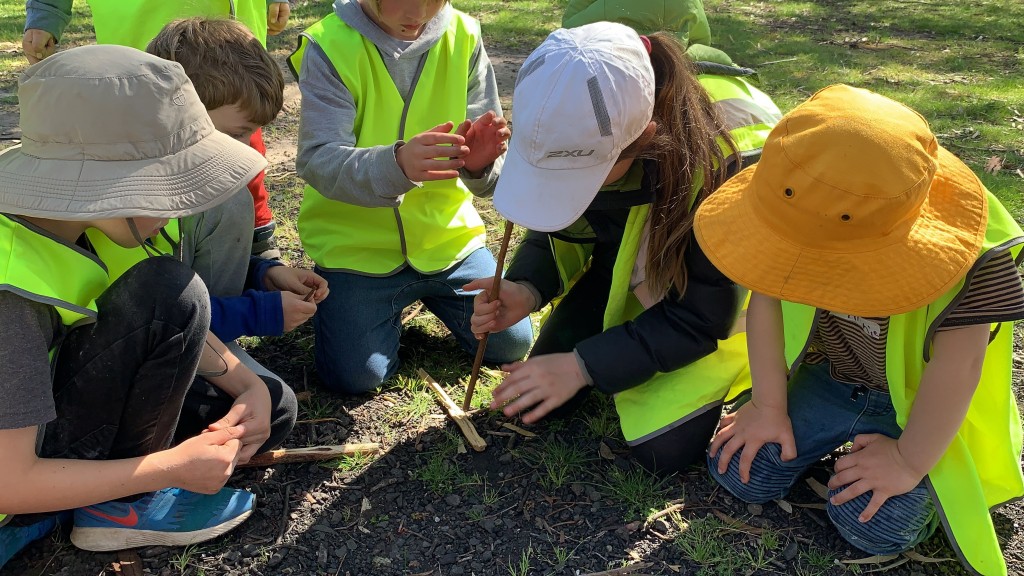
Children naturally crave sensory input and some more than others so it is an important component to provide breadth in how we learn. Back in the 1800’s the ipad, white board or chalkboard was actually a sand tray for children to practice their writing. Messy you say? Genius I say. It’s reusable and organic too, with the added dimension of sensory input whilst learning literacy and numeracy. It is simple.
How have we strayed so far from our natural way of learning? Let’s take it back outside in the healthy sunshine and fresh air and learn in a holistic, inclusive and dynamic natural classroom. Let us think outside the box just like we hope our children will and our resilience may just improve alongside theirs. Yes, bush schools are the answer!
Need inspiration and ideas for taking your learning outdoors? We’ve got a range of online nature play and nature learning resources for parents, teachers and homeschoolers that you can find here.
This article was written by Mornington Peninsula bush playgroup facilitator and primary school teacher, Alison Cooper.
See our full Mornington Peninsula bush and beach kids programs for 2024 HERE.
